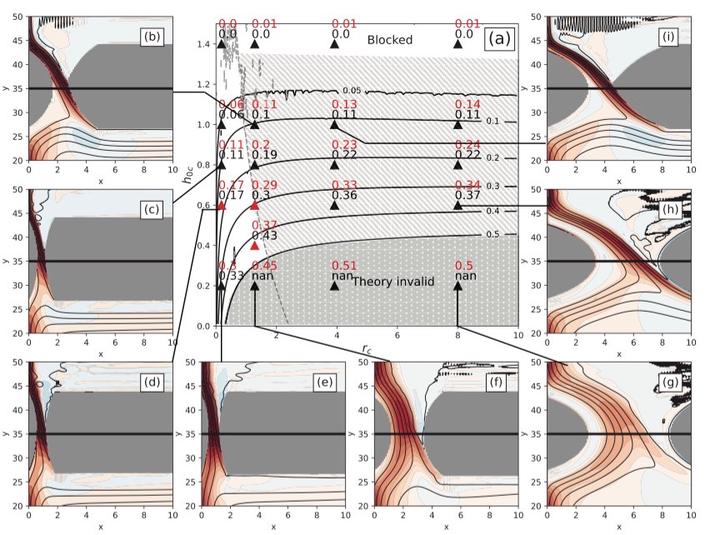Rotating Hydraulics and Samaon Passage Applications
 Tan et al. (2022)
Tan et al. (2022)The large-scale circulation of the ocean, also known as the Meridional Overturning Circulation (MOC), comprises a series of shallow and deep water currents that transport mass, heat, carbon, and nutrients around the globe. The Samoan Passage, which carries the majority of the transport in its deep northward branch, is a key component of the Pacific Ocean circulation system. Despite the challenges of making observations at depths of ~5000 meters, data from three expeditions between 2011 and 2014 revealed a previously unknown division of flow between a deeper eastern channel and multiple shallower western pathways within the Samoan Passage complex. Additional changes, such as a warming and weakening of the flow through the passage, have also been observed over the past twenty years, underscoring the need for long-term observations.
In particular, the flow in the Samoan Passage is subject to hydraulic control, which occurs when a saddle point in the passage (i.e., a sill) is high enough to critically influence the volume of flow passing through. Hydraulic control in the Samoan Passage is complex, as the passage comprises multiple channels with varying geometric features, and the flow is subject to the Earth’s rotation. I developed a theoretical framework to extend the rotating single-channel hydraulic control to multi-channel scenarios, successfully predicting volume transport across multiple channels. The headline figure shows the analytical solution for hydraulically controlled flow across different channel geometry configurations. The theory is applicable to dense overflows in other passages and helps inform effective monitoring strategies for these flows, particularly in the context of a changing climate.
